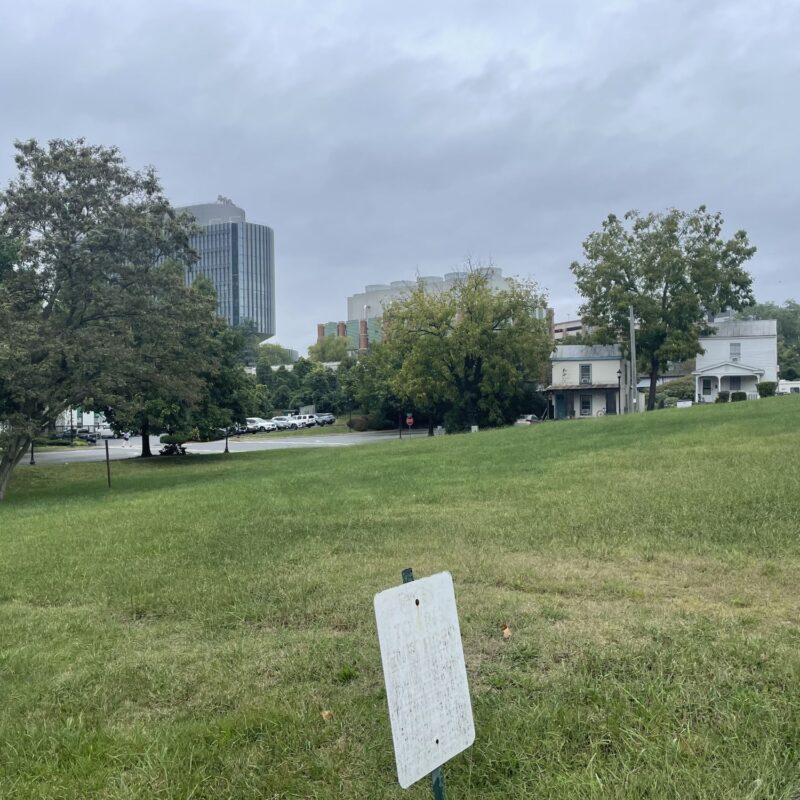The Shelton family loves apples. “We make apple pancakes all the time,” says Chuck Shelton, one of three Shelton sons who retired from full-time employment in North Carolina to manage Vintage Virginia’s apple orchard, Rural Ridge, and its new cidery, Albemarle Ciderworks, along with his sister, founder Charlotte Shelton, his 90-year-old father, Bud Shelton, and the other Shelton siblings, cousins and kids that help out whenever they can. For this family, tending to 250 varieties of heirloom apples truly is a labor of love as much as a business. It all started when Charlotte, a stockbroker, attended a vintage apple tasting at Monticello in 1995. As per usual, Thomas Jefferson was the inspiration for higher agrarian ideals—in this case, preserving the diversity of apples that once grew across North America. Many of these unique varieties have become rare if not practically extinct thanks to our supermarket chain society that favors a small number of less-flavorful but hardy varieties that can be shipped great distances and attract buyers with their uniform size, shape and color.
|
It mattered to this one: Vintage Virginia Apples’ orchard keeps 250 varities of apples from disappearing. |
As the Shelton clan had recently purchased a large open field in North Garden when patriarch Bud had retired from the Virginia Department of Forestry (both Bud and Charlotte built homes there) and were interested in cultivating the land, they began planting 40 to 50 trees with the assistance of Virginia apple historian and orchard consultant Tom Burford. Among the first batch they planted were all 18 of the varieties T.J. grew at his orchard, including the Albemarle Pippin, which historians can trace back to 1759. Since apple trees are grafted rather than seeded for propagation, in a sense the Sheltons’ Pippins come from the very rootstock touched by Virginia’s favorite native son. The Sheltons now have six acres of vintage apple trees that bear fruit for sale directly from the orchard as well as from a few retail outlets and used by area restaurants, but by no means are they a large operation. They have 10 to 20 trees of some varieties, but only one or two of others, meaning many of the varieties have short but sweet selling potential. Chuck says they consider themselves “apple collectors” and educators as much as professional producers. Vintage Virginia hosts periodic apple-related horticulture lectures and now itself participates at Monticello’s various agricultural programs, including the annual Heritage Harvest Festival.
The Sheltons also sell vintage apple trees at their nursery, but the real potential business bonanza is their hard apple cider—a value-added product that Chuck Shelton says his family has been contemplating making since 2000. In this, their first season, the cidery has produced about 860 cases of three different types of traditional, dry hard cider—the kind that used to be the daily beverage of choice for our American forefamilies, says Chuck. From purchasing state-of-the-art cider-making equipment and constructing a tasting room, to planting two additional acres of apples trees that will bear more of the types of apples suitable for cider-making, the cidery was a big investment for a relatively small payout. Though Chuck Shelton says, “We’ll probably sell out by the end of the year.” The plan is for the cidery to reach a capacity of at least 2,000 to 3,000 cases a year—in which case, it will cover the investment as well as help support “the next generation,” says Chuck Shelton. Until then, at the very least, the Shelton family has plenty of fruit to keep those weekly apple pancakes interesting.
|
Just like the one Grandma used: The classic apple corer/peeler/slicer still works the best for, well, coring, peeling and slicing. $34.50 from The Happy Cook. |
Local Apple, Dried Cranberry & Walnut Galette
From Ken Wooten, co-owner and chef of Orzo Kitchen & Wine Bar
For dough:
2 cups flour
1/4 cup sugar
1/4 Tbs. salt
1 lemon, zested
6 oz. cold butter cut into small pieces
1/4 Tbs. cinnamon
1/2 cup ice-cold water
For filling:
5 large or 7 medium local apples, preferably Albemarle Pippens, peeled, seeded and sliced to ¼-inch thickness.
1/2 cup sugar
2 Tbs. lemon juice
1/2 cup chopped walnuts
1/4 cup dried cranberries
1 tsp. cinnamon
2 Tbs. butter for filling
Honey for drizzling
Milk for brushing dough
Sugar for dusting dough
Cinnamon-sugar mixture (1 cup sugar to 1 tsp. cinnamon)
Vanilla gelato for serving
Make dough: Combine flour, sugar, salt, cinnamon and lemon zest in table mixer. On slow speed, add butter a few pieces at a time. After adding all butter, make sure flour is free of large clumps; crumble with fingers if necessary. Slowly add ice water until the dough begins to come together. Dough should not be soaking wet. Make sure flour on bottom of mixer is integrated into dough. Remove from mixing bowl and form with hands into a one-inch thick disk. Wrap in plastic and refrigerate for 30 minutes.
Preheat oven to 375 degrees. Mix everything except butter and honey. Roll out dough and fill with apple mixture. Fold dough over to ¾-inches to form edge of crust. Brush dough with milk and dust with sugar. Add butter on top of apple mixture in small pieces, evenly distributed. Cover with foil and bake for 45 minutes. Remove foil, ensuring that crust is golden brown. Drizzle entire galette with honey and bake for another 5 minutes. Remove from oven and allow to cool slightly. Slice into pieces and serve with a scoop of vanilla gelato and dusting of cinnamon-sugar. Serves 8.
 |
THAT WAS THEN
We don’t know which variety of apple Eve stole from the Tree of Knowledge, but most likely it wasn’t the ubiquitous Red Delicious.
Back to FOOD & DRINK ANNUAL 2009







